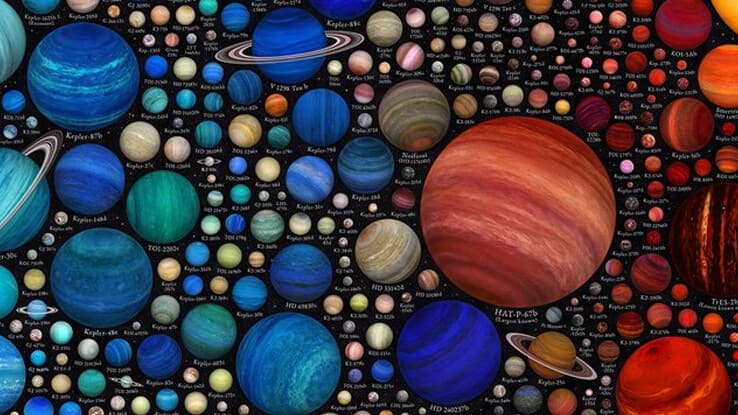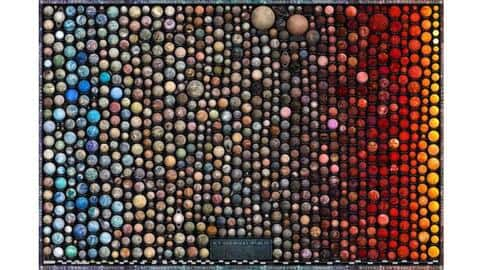Was a long read? Making it simpler…
What’s the story
Martin Vargic, a Slovakian space enthusiast, author, and graphic artist, has crafted two infographic posters featuring nearly 1,600 exoplanets.
The infographics titled Icy and Rocky Worlds and The Exoplanet Zoo are the culmination of Vargic’s lifelong passion for astronomy.
Despite residing in areas with high light pollution, Vargic’s childhood fascination with lunar craters, Jupiter’s moons, and Venus’s phases sparked his interest in the cosmos.
Vargic’s journey from astronomy enthusiast to infographic creator
In 2015, Vargic immersed himself in numerous books on astronomy, cosmology, space exploration, and physics. This knowledge laid the foundation for his ambitious infographics.
After three years of meticulous work, he published a visual book in 2019 titled Curious Cosmic Compendium, dedicating ten pages solely to exoplanets.
His fascination with the cosmos transformed into a creative endeavor that visually represents the universe’s unknown planets.
Detailed look into Vargic’s exoplanet infographics
The Icy and Rocky Worlds infographic by Vargic visually represents over 1,100 known exoplanets, arranged by the amount of heat they receive from their stars.
His second infographic, The Exoplanet Zoo, displays planets getting progressively hotter from left to right, including 55 Cancri e, the hottest known rocky exoplanet.
Both infographics also feature unique exoplanets like PSR-B1620-26b, the oldest known exoplanet, and WASP-12b, a gas giant with an egg shape due to its proximity to its star.
Vargic’s methodology and resources for infographic creation
Vargic spent approximately 6-7 months creating these infographics, simultaneously crafting planetary textures and rendering each planet individually.
He sourced data from three public exoplanet databases: The Extrasolar Planet Encyclopaedia, NASA’s Exoplanet Archive, and ExoKyoto.
The colors of the gas giant exoplanets are based on the Sudarsky Scale, which considers various chemicals and temperatures of planetary atmospheres.
High-resolution versions of his infographics can be viewed at halcyonmaps.com.

Shambhu Kumar is a science communicator, making complex scientific topics accessible to all. His articles explore breakthroughs in various scientific disciplines, from space exploration to cutting-edge research.




